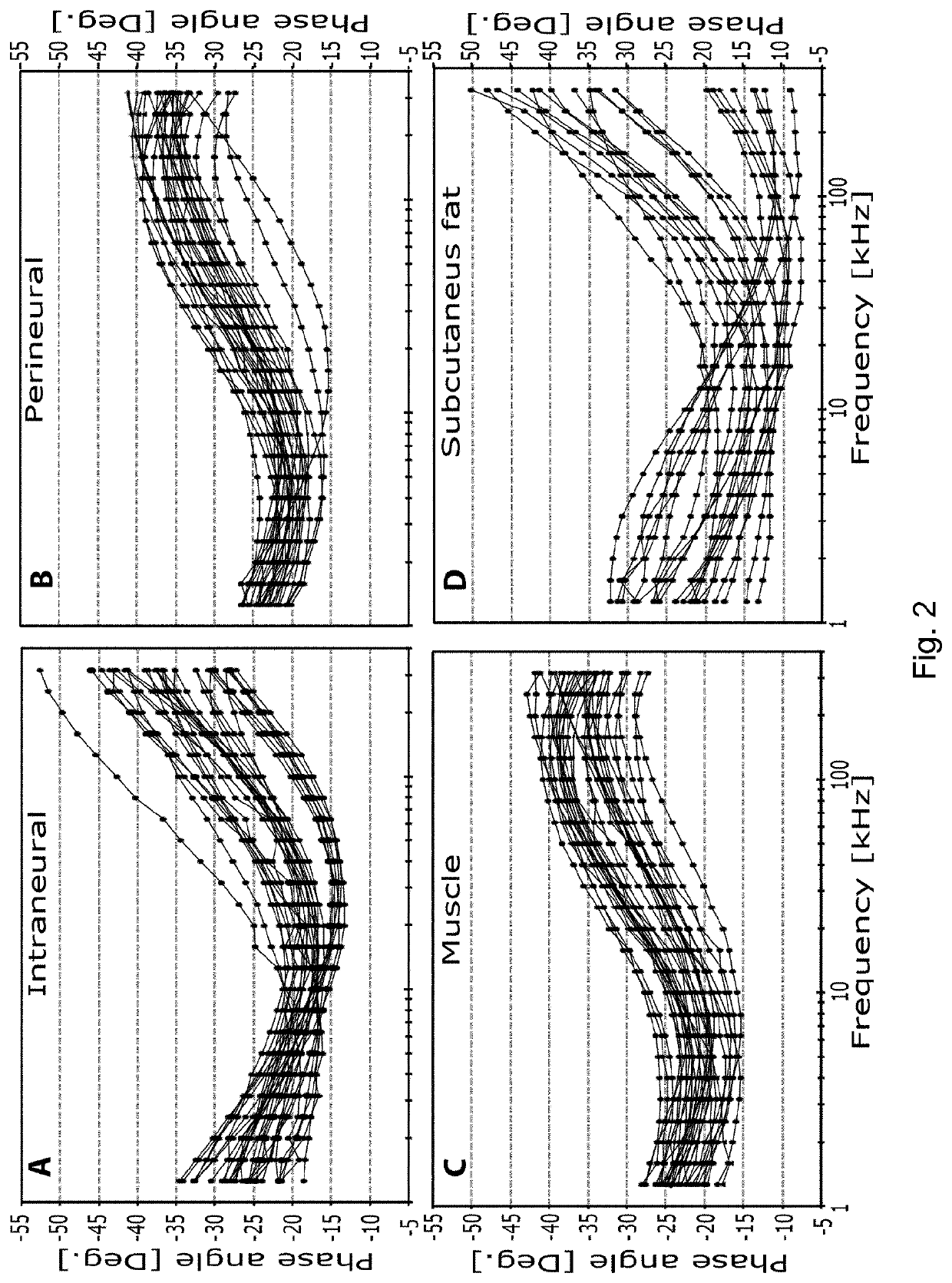Determining biological tissue type
a biological tissue and type technology, applied in the field of biological tissue types, can solve the problems of low or no effect, persistent motor or sensory impairment, debilitating neuropathic pain, and serious implications, and achieve the effect of increasing accuracy
- Summary
- Abstract
- Description
- Claims
- Application Information
AI Technical Summary
Benefits of technology
Problems solved by technology
Method used
Image
Examples
Embodiment Construction
[0032]The currently proposed method and apparatus uses impedance spectra to identify the tissue type. This is based on precise determinations of local impedance values in biological tissue surrounding a tip of a probe such as a needle. Such impedance values allow localized determination of the tissue type and thereby determination of an anatomical positioning of the probe. This then allows for adjustments to the positioning of the probe.
[0033]The measurement of impedance spectra for use as input data for the method and apparatus proposed herein can be achieved in any suitable way. What is important is that the impedance of the tissue can be measured with an electrical signal applied via the probe over a range of frequencies, and that the measured / recorded spectra is a measured AC-impedance of the type that can be expressed as a complex number and split in a real part named resistance (R) and an imaginary part named reactance (X). By mathematical transformation the same impedance can...
PUM
 Login to View More
Login to View More Abstract
Description
Claims
Application Information
 Login to View More
Login to View More - R&D
- Intellectual Property
- Life Sciences
- Materials
- Tech Scout
- Unparalleled Data Quality
- Higher Quality Content
- 60% Fewer Hallucinations
Browse by: Latest US Patents, China's latest patents, Technical Efficacy Thesaurus, Application Domain, Technology Topic, Popular Technical Reports.
© 2025 PatSnap. All rights reserved.Legal|Privacy policy|Modern Slavery Act Transparency Statement|Sitemap|About US| Contact US: help@patsnap.com



